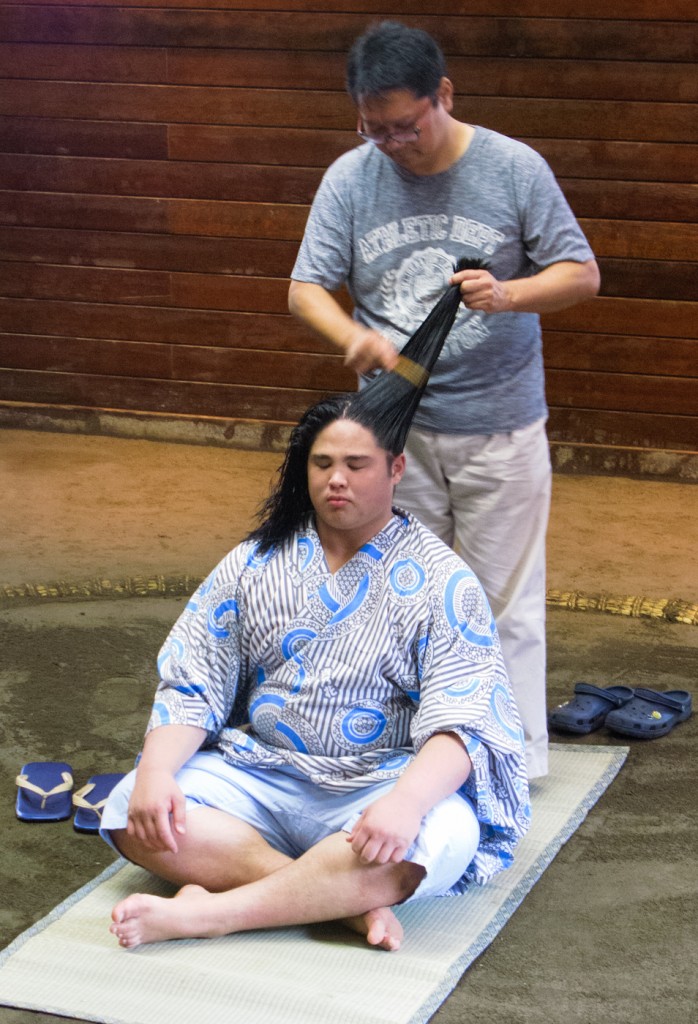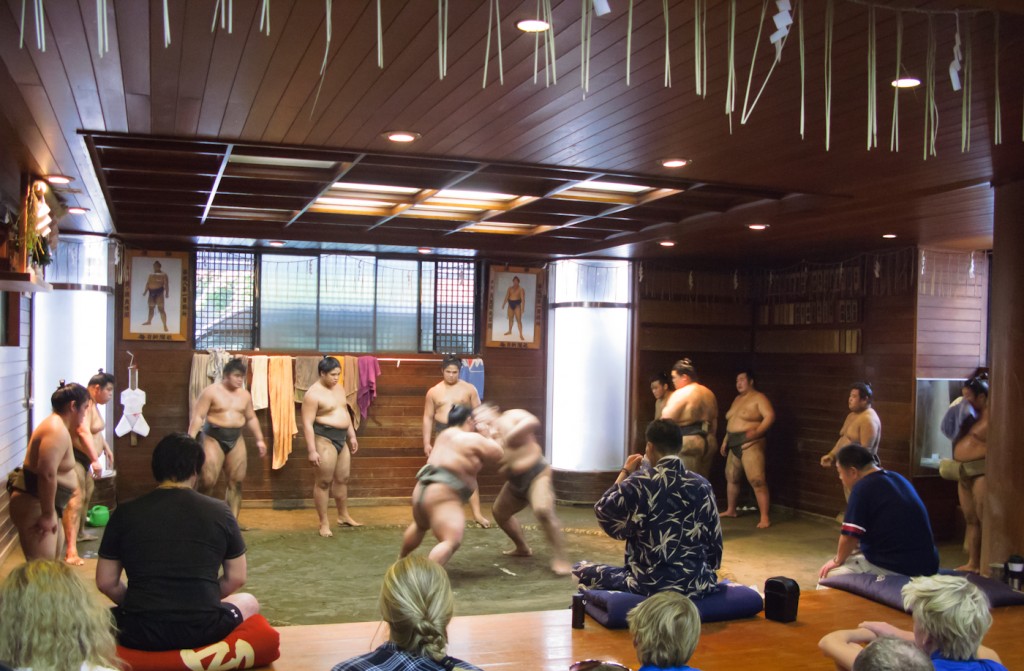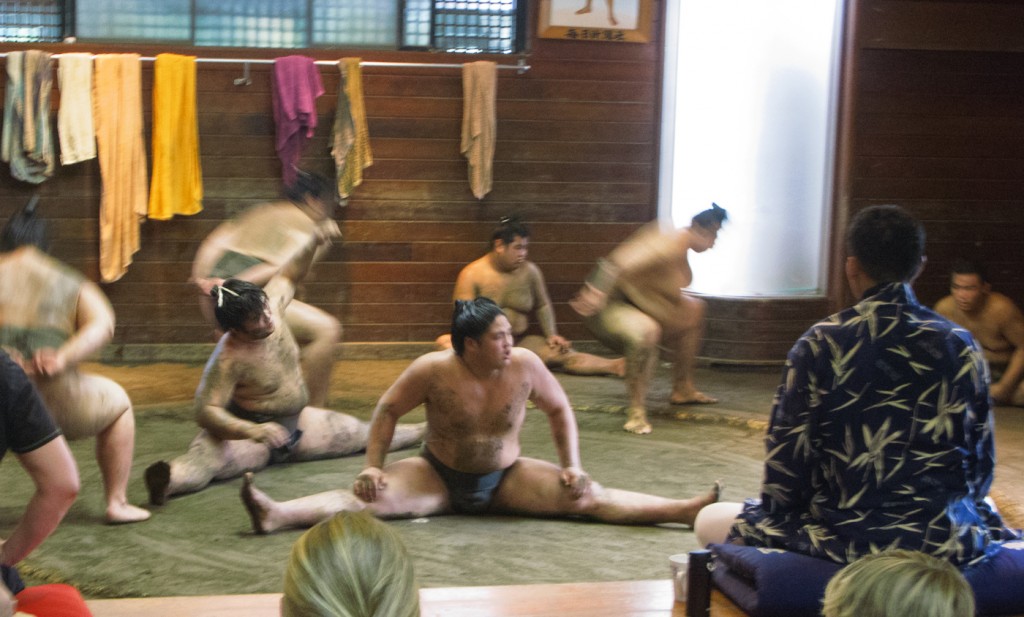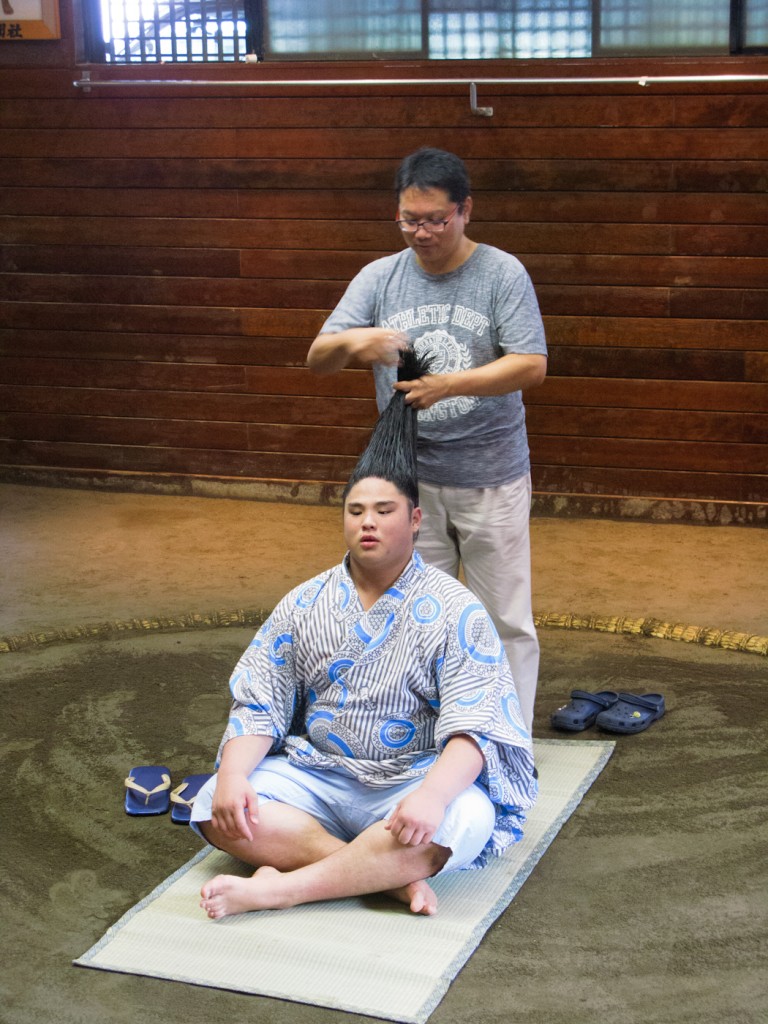I spent the morning ruining my knees (again) whilst watching fat men beat the crap out of each other.
Through a former colleague, I was invited to join a very rare tour of Takanohana Beya, the current sumo stable of former Yokozuna Champion Takanohana. The “stable”, in this case, is a three story building where the rikishi live and train.
My former colleague runs a business helping people acquire sumo tickets and has, of late, been attempting to expand by creating closer links with the Sumo Kyokai, the body that manages sumo (for better and for worse). By a mix of persistence and luck, he was granted permission to bring a group of foreigners to watch a practice.
Although some stables open practices to outsiders (for a small fee) it’s very rare for foreigners to be granted this honor as there are lots of rules 1) no video 2) no flash photography 3) no cellphones 4) no talking 5) no visible tattoos and 6) don’t point the bottoms of your feet at the ring. We were going into their home and possibly interrupting their job so they only wanted people present who would not disrupt things.
Because of all these rules, and because a major tournament starts next week (meaning this was an important practice), my former colleague invited me along because he thought he’d have at least one adult in the room. (He really, really should read this blog before thinking things like that.)
After we arrived we got to see a few stages of practice over about 90 minutes. First there were some practice matches where the winner kept accepting new challengers and then Takanohana Oyakata (elder) arrived and began watching and, on occasion, directing the practice.
The warm up matches were followed by continuous attack practice in which one young rikishi (wrestler) pushed another across the ring whilst the other resisted being pushed. At some point, the younger rikishi being pushed was replaced by the highest level rikishi in the stable. At that point it got intense. If a pusher fails to get the other out, the rikishi being pushed forces the pushers head down and forces him to walk in a squat. (Sometimes, if they go in too high, they grab the pusher around the neck and sling him around until he falls.) There’s then a ritual where the rikishi being pushed throws the pusher down and they start over. I don’t know how many rounds this is supposed to go, but several young rikishi were reduced to grunts and wails by the end and could barely stand up. This was intense to see.
When they were finished, they then had to go off to the side and do leg practice.
Eventually, the practice moved to leg work. Some rikishi stretched whilst others hopped around the ring twice, then turned around and hopped around it twice in the other direction.
After the practice there was a break and we got to see a demonstration of how the wrestler’s top knots are prepared by an expert hair stylist.

Cleaning the wrestler’s hair and spreading the wax. The wax has a scent that is supposed to attract women.
After the hair styling demonstration we got a chance to eat Chanko Stew prepared by the younger wrestlers. We were eating the same food the wrestlers were eating upstairs and could even get seconds.
The stew was good, but salty, which is what you’d expect from men who’d just spent 90 minutes sweating and crying.
It was all much more interesting than I was expecting and I think all 15 or so guests were well behaved and my former colleague will have a chance to get invited back.
In the end I realized that although they can keep the weight, I wish I was that flexible.



